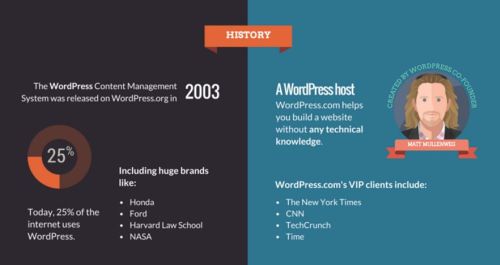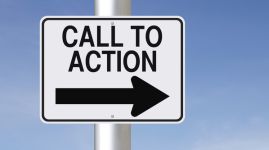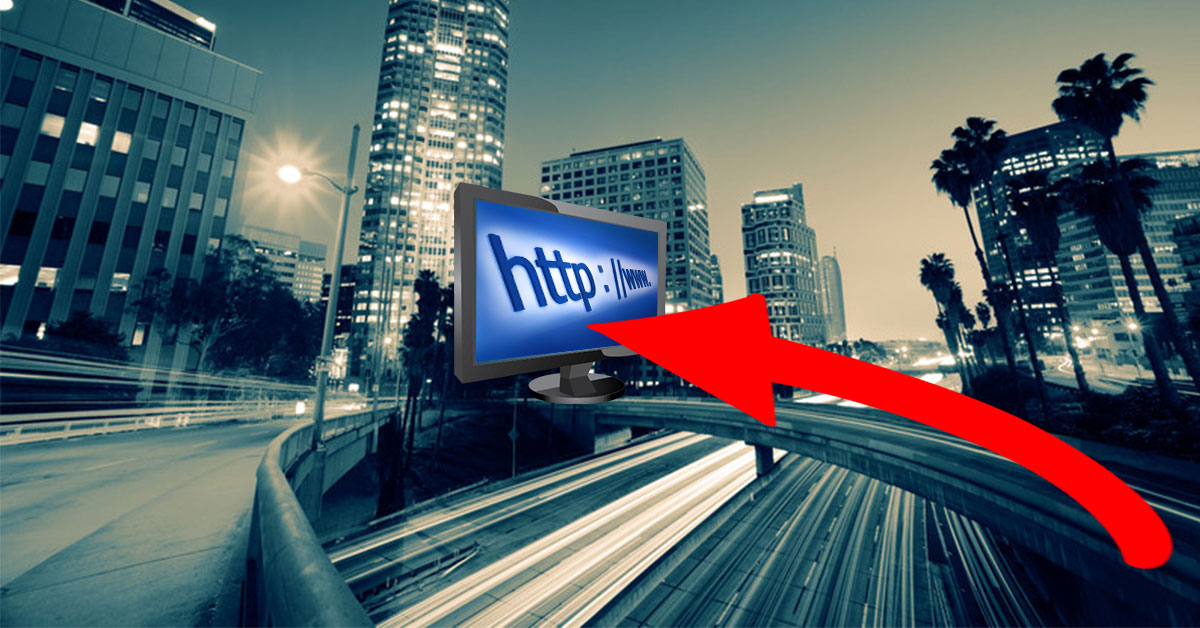Does your website have ADHD? To be more specific, does it wander off task and have difficulty sustaining focus? If it does, than you most likely experience issues attracting visitors and making sales. Fact is, the less focused your website is, the less effective it will be.

6 Reasons Series: #2 Lack of Direction (Missing Calls-to-Action)
3.
6 Reasons Series: #2 Lack of Direction (Missing Calls-to-Action)
6 Reasons Your Website is Ineffective (Continued): Reason #2
It’s simple, your website won’t make money or serve its purpose if visitors leave before taking action. Yet, 70% of all small business websites fail to engage visitors with any call-to-action at all! Whether this passive approach is on purpose or not doesn’t matter. The result will always the same, an ineffective website. No traffic + no conversions = no money!
In the 2nd part of this series I discuss the importance of giving clear direction as part of your design plan. If you are able to do this in a meaningful way, you will already be better off than that other 70% trying to solve the wrong problem. In other words, these businesses are so focused on getting people TO their website, they forget about closing the sale once a visitor lands on their site.
Attraction is only half the battle
Evaluating effectiveness of a website has two general factors. The first is attracting visitors to your website (traffic). You will only have so much control there. The second is getting people to take action once they get to your website (conversion). This is the factor you can have the most control over. Since this is something you can fix, I want to focus on it here. Let’s get started.
Why isn't anyone taking action on my website?
 The answer to this question might be simpler than you think. Did you ask them to do anything? Of course, there could be other issues as well, but I will get to those later in this series. For now, I will be addressing the two big reasons people don’t take action on a website:
The answer to this question might be simpler than you think. Did you ask them to do anything? Of course, there could be other issues as well, but I will get to those later in this series. For now, I will be addressing the two big reasons people don’t take action on a website:
- There are no clear directions or path laid out,
- There are no calls-to-action (CTAs) on the website.
There is overlap between these two problems. If a website is not doing one, it is most likely not doing the other. Both problems are failures to lead your website visitors and help them find what they want. A failure to do either will result in an ineffective website. For a lack of a better term, I will refer to this failure (or oversight) as passive website design.
If you don't lead, they won't follow
When I refer to passive here I mean “unassertive or docile.” In other words, there is no intentional marketing in place. There is no attempt to lead or sway visitors one way or the other. Passive websites usually have owners who:
- Have some aversion to marketing,
- Believe their product or service will “speak for itself”,
- Maintain a “build it and they will come, if they come they will buy” philosophy, or
- They built the website themselves and don’t know any better.
Passive websites not only fail to engage visitors, they end up failing their owners as well. Let’s take a look and see if you can spot any passive design issues on your business website.
The hallmarks of passive and ineffective design
If you sense that people are not taking action on your website, take a look at your home page and ask yourself these questions:
- Are there any buttons or text that would encourage someone to click and find out more?
- Are there any visual clues on what someone should to do next?
- Are there any offers, specials?
- Is too much going on? Is the page cluttered?
- Are there any clear call-to-action elements?
- Is there anything for people to interact with? In other words, are there any links to forms, videos to watch, surveys to fill out, etc.?
These are just six, but there are many more. Understand that effective website design does not just happen by accident, it is purposeful. It takes planning, research and careful execution to lead people in an effective way. Of course, there must also be useful and relevant content to lead them to (see my post on Problem #1: Lack of Quality Content).
Before we proceed I need to address something that happens too often. If you are not sure what you want people to do on your website, it will show in your design. You MUST have a clear goal in mind and then design a path to get there. Let’s take a look at an example we can all relate to, one that will help illustrate my point about leading your customers.
Learn about leading from your grocery store
 You may think the choices you make as you travel down the grocery store aisles are all yours. But, in reality, the floor plan, end caps, displays, and pricing models are all enticing you to buy.
You may think the choices you make as you travel down the grocery store aisles are all yours. But, in reality, the floor plan, end caps, displays, and pricing models are all enticing you to buy.
Millions of dollars of research & design goes into figuring out how to get you to spend more. Ever just run in for milk and walk out with an arm full of items? This happened because they put milk in the back. Masterful marketers discovered a long time ago that milk is the one item shoppers come in for most. So, they make you walk through their entire store to get to it! Read this article on the psychology of grocery store layouts to learn more. Lets take a look at how you can begin to apply these tactics to your website.
How to apply grocery store marketing to your website
Here are four things that we know that major grocery store chains use as part of their lead generation & marketing plans. All four of these work together to encourage customers to make purchases. They will even make your web marketing more effective. I have altered them slightly to make them fit website design.
- Lead Them. Don’t put your most valuable or sought after items up front. Make visitors click to get to them (Remember the milk in the back?). But, make sure you make the path there obvious. Lead them there!
- Make them want something they didn’t know they needed! You have the opportunity to make visitors aware of a problem they didn’t even know they had. You can do this by asking leading questions and host of other ways.
- Add impulse buys. Add impulse items while they are checking out or before they leave your website. Stores do this by placing items in the check out lane. You can accomplish this by:
- Using exit intent pop-up technology (OptinMonster), or
- Adding related items in shopping carts (like Amazon does), or even
- Suggesting add-on services or products next to your pricing grids. You can even suggest other posts to read if you are a blogger.
- Don’t waste traffic. Grocery stores never waste a visit; you shouldn’t either. It’s hard to get visitors to your site, don’t waste that visit by not collecting anything. Find a way to capture information from those who visit (lead capture, opt-in forms) & track what they do when they are there (Google Analytics).
Finally, lets take a look at some of the actual elements used on websites to call people to action or entice visitors to buy.
Examples of useful CTA elements
This is by no means a comprehensive list. These are just some of the most common ones you will see.
- Call-to-action buttons. If you have spent any time on the web you have seen these. They are those bright buttons with leading text that entices you to click them. “Don’t miss out!”, “Free for 30 days”, “Get 25% off”.
- Compelling Text & Special Offers. I am sure you have seen click bait headlines around the web. These are teasers that make you want to click and find out more.
- Compelling text example: “1 in 4 people have experienced identify theft. Find out how to protect yourself.“
- Special offer example: “Sign up today and get 15% off annual memberships“
- Countdown Timers. There are times when a visitor might like what they see, but not feel ready to commit to buy right then. In some cases, a countdown timer helps close the sale.
- Graphics & Images. Images and graphics can be used to reinforce your sales text or call-to-action.
- Images are used most often to appeal to emotion (pathos) as a way to reinforce a sales pitch.
- Graphics can be many things and used in many ways. But, just like images, they are used to reinforce a sales message or some point of view. The difference is, they are often used to appeal to logic & reason (logos). Infographics are good example of this.





If you interested learning more about appealing to your target market’s likes & feelings, Read my article HERE on Psychographics and the modes of persuasion (Ethos, Pathos, and Logos).
Your own call to action assignment
 After reading this article you should have several ideas on how to lead visitors and call them to action. Now it’s time to take action and start adding CTA’s and other elements to your own website. Think of ways to lead your visitors to products or services that give you the best margin of profit. Begin with one or two items and add more as you get better at it. Just do something!
After reading this article you should have several ideas on how to lead visitors and call them to action. Now it’s time to take action and start adding CTA’s and other elements to your own website. Think of ways to lead your visitors to products or services that give you the best margin of profit. Begin with one or two items and add more as you get better at it. Just do something!
Remember, if you add a call to action to your homepage, you have an advantage over 70% of small businesses that don’t. Those are great odds to help make your website more effective!
Next up, Reason #3: “Lack of Focus”



